Russell Garden Fix: Repair Salt Damage This Spring
Quick Overview: Fixing Salt Damage
- Identify brown, crispy grass/plants near paved areas.
- Flush affected soil thoroughly with water.
- Amend soil with compost and potentially gypsum.
- Rake dead material and overseed lawns or replace damaged plants.
- Prevent future damage with careful de-icing and barriers.
- Need professional help? Request a quote today!
Ah, spring in Russell! The snow *finally* melts, the birds are singing… and wait, what's that brown, crispy mess along the driveway and sidewalk? Looks like our lawns and garden beds received winter's rather unwelcome *salty farewell kiss*. We all know the routine after a typical Ottawa region winter – keeping roads and walkways ice-free often means plenty of salt and de-icer. While necessary for safety, that salt doesn't just vanish come springtime. It lingers, seeping into the soil, essentially dehydrating grass roots and stressing out our favourite shrubs and perennials. It’s a common landscaping headache shared across communities like Russell, Marionville, Embrun, and Greely. But don't throw in the trowel just yet! This guide is packed with straightforward advice and actionable steps to help you assess the salt damage and effectively repair your lawn and garden, bringing back that lush, green look we all love. Let's get your spring landscape thriving again!
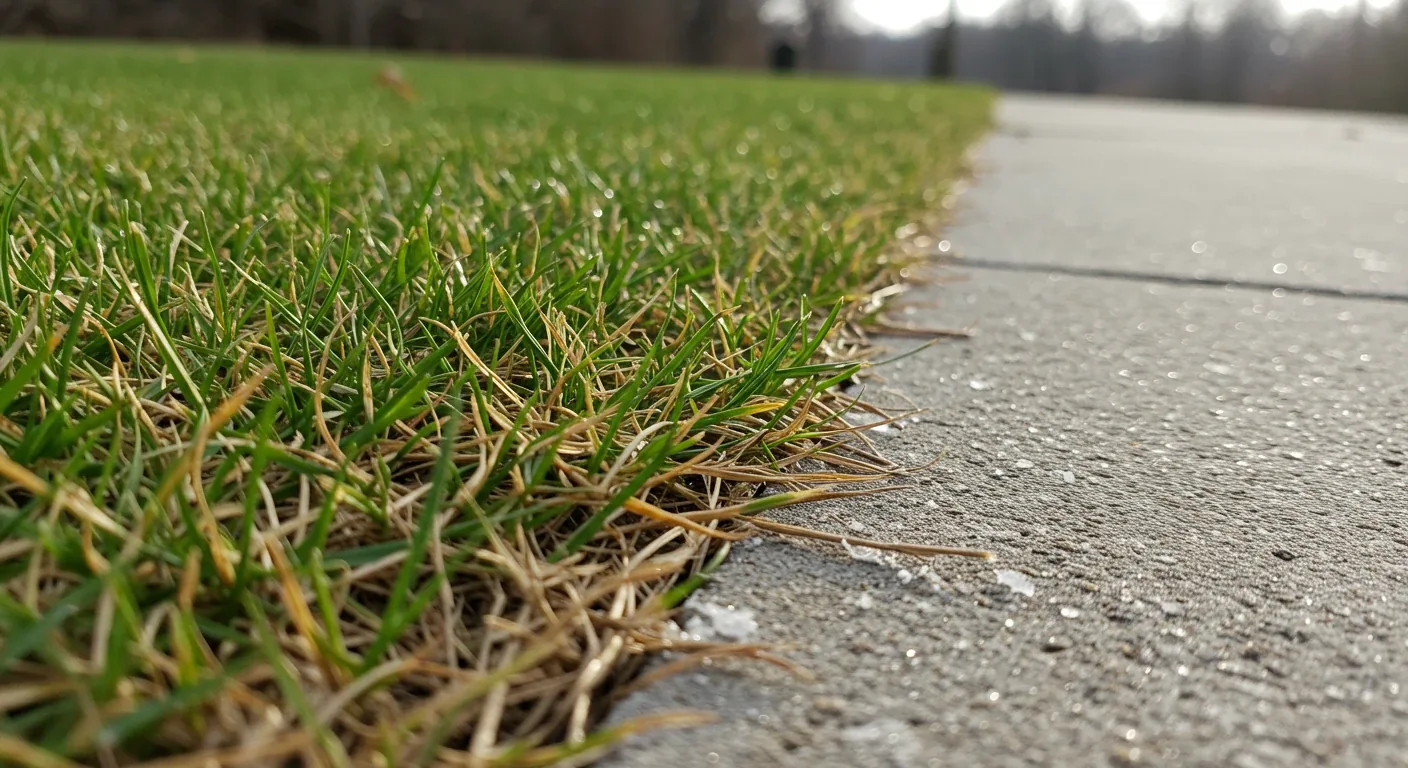
Why's My Lawn Look Like Toast? Understanding Salt's Dirty Work
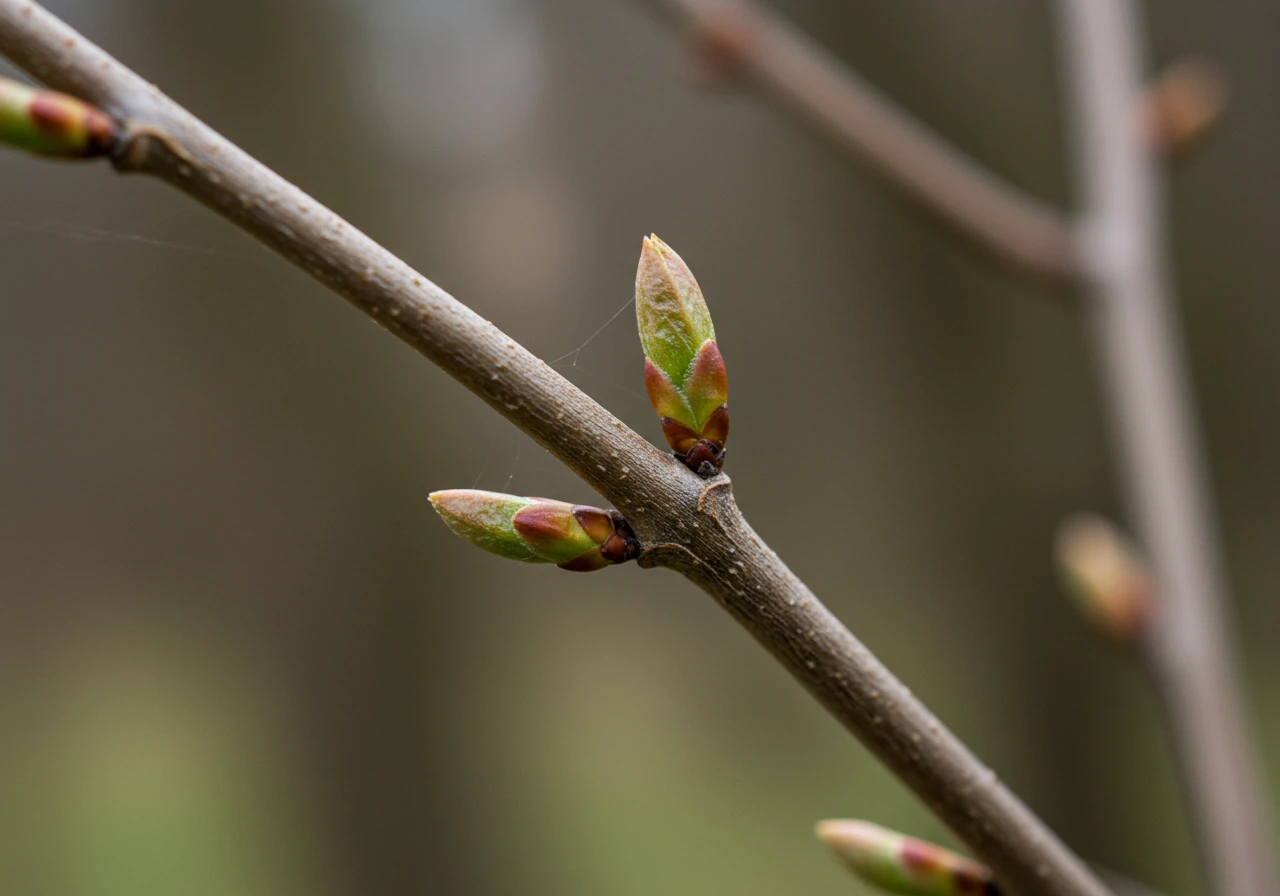
So, you've noticed those sad, brown, crispy edges along your driveway or sidewalk, looking suspiciously like overcooked toast? That, my friend, is often winter salt's unwelcome signature. While essential for keeping Ottawa's roads and walkways safe, salt wages a sneaky war on our lawns and gardens once the snow melts. Let's break down how this seemingly harmless white stuff causes such landscaping grief.
First off, salt makes your plants *incredibly* thirsty. Think of it like this: salt in the soil acts like a magnet, pulling water *away* from plant roots through a process called osmotic stress. Even if the ground feels damp, the high salt concentration prevents your grass and plants from absorbing the moisture they desperately need. The result? Dehydration, leading to that tell-tale brown, burnt appearance, especially tough when you're aiming for achieving a healthy lawn, especially in areas like Russell.
But salt doesn't just steal water; it's also a bit toxic in large doses. Table salt (sodium chloride) breaks down into sodium and chloride ions. Plants absorb these, but too much acts like poison, interfering with photosynthesis and nutrient uptake. You might see this as yellowing leaves, burnt leaf edges (leaf scorch), or generally stunted growth – more headaches when you're already focused on preventing plant stress throughout the seasons.
Finally, salt messes with the soil structure itself. This is a big deal here in the Ottawa region, particularly with our common clay soils. Salt causes the fine clay particles to pack together tightly, destroying the soil's natural crumbly structure. It becomes dense and compacted, almost like concrete. This makes it hard for water to drain, air to penetrate, and roots to grow – a real challenge in suburban spots like Barrhaven where runoff concentrates salt along paved edges. Effectively managing water effectively in tricky clay soil becomes even harder. Improving soil health through approaches like improving soil health with organic lawn care methods can help combat this over time.
Understanding *how* salt causes damage – dehydration, toxicity, and soil compaction – is the first step toward fixing it. If the damage looks overwhelming, don't hesitate to call in the experts; sometimes professional landscaping services are needed to give your yard the best chance at recovery.
Playing Detective: Spotting Salt Damage After the Thaw
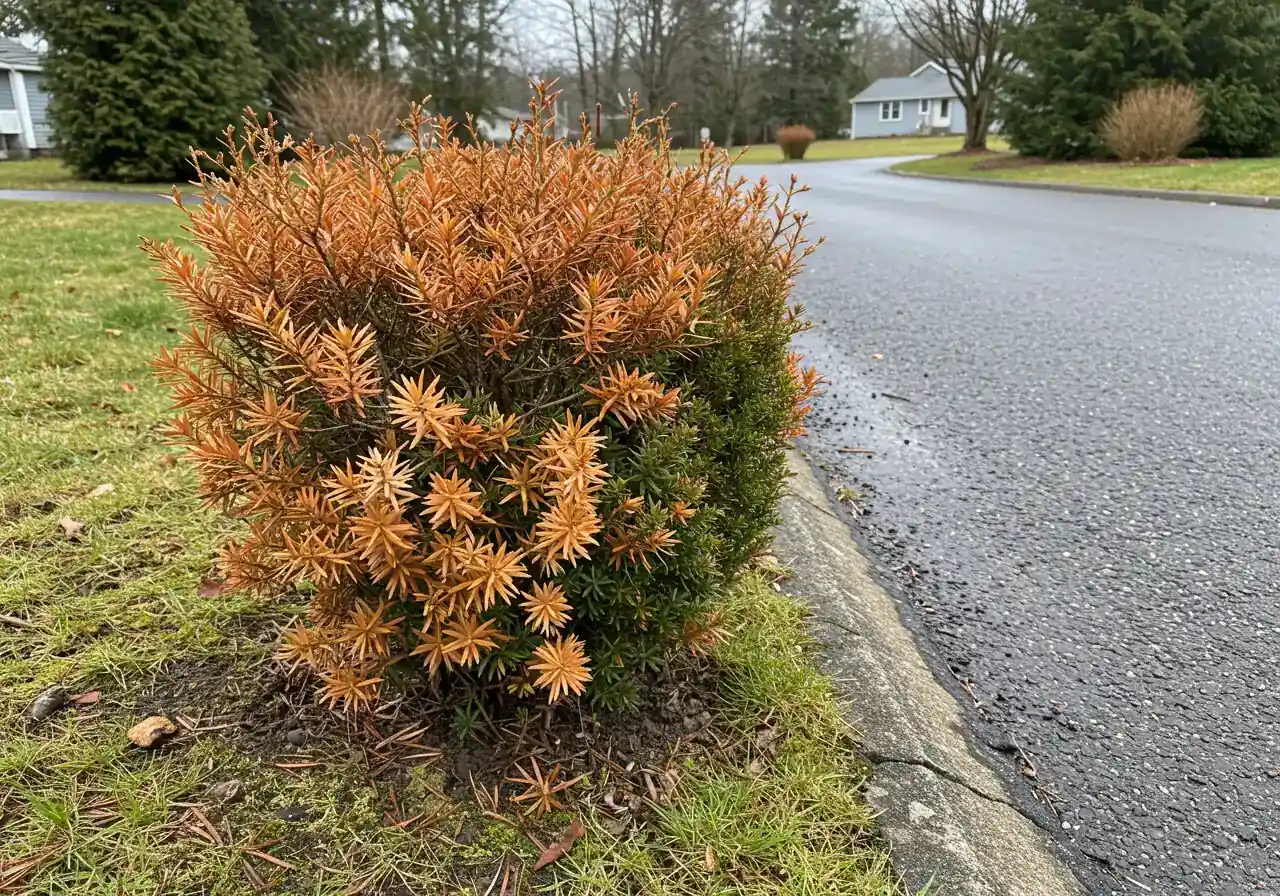
Alright, time to put on your detective hat – maybe a deerstalker cap, if you're feeling particularly Sherlockian! Winter's gone, but it often leaves behind clues of its salty siege. Spotting the damage early is key to helping your lawn and garden bounce back. Let's investigate the tell-tale signs:
The Case of the Crispy Lawn:
This is usually the most obvious suspect. Look for distinct strips or patches of dead, brown, or straw-coloured grass right next to driveways, sidewalks, and roads. The damage often has a fairly sharp edge where the healthy green grass begins. This pattern is classic salt spray or runoff damage. *Don't confuse this with:* Snow mold, which usually appears as circular, matted patches (grey or pinkish) anywhere on the lawn, or general winter kill, which might cause more widespread, less defined browning.
Investigating Trees and Shrubs:
Your woody plants aren't immune! Check these clues:
- Evergreen Troubles: Look for brown or yellowed needles, especially on the side of the plant facing the road. This "winter burn" is often made much worse by salt spray.
- Deciduous Dilemmas: Once leaves emerge, watch for brown, scorched edges (leaf scorch), smaller-than-usual leaves, or delayed budding. You might also see twig dieback, where the tips of branches look dead. Bud damage, where buds fail to open properly, is another sign.
- Location, Location, Location: Damage is almost always most severe on the parts of the plant closest to the source of the salt.
Examining Garden Beds and Perennials:
Your flower beds, especially those bordering walkways, need scrutiny too.
- Burnt Beginnings: Emerging perennials might show brown edges or wilting leaves shortly after sprouting, even if the soil seems moist. Salt makes it hard for them to drink up water!
- Stunted Starts: Plants in affected areas may seem generally less vigorous or smaller than their counterparts further away from salted zones. Sometimes, entire sections of a bed closest to a path just fail to thrive. Seeing examples of both struggling and healthy yards can be helpful; you can browse through some project photos in our Clean Yards Landscaping Project Gallery.
Putting it All Together:
The biggest giveaway is *where* the damage is. If the browning, scorching, and dieback are concentrated along areas where salt was applied or likely splashed, salt is your prime suspect. Think about the typical layout of properties in areas like Greely or Metcalfe – long driveways and road frontage can mean significant exposure. If the damage is uniform across your entire yard, or appears in patterns unrelated to paved surfaces, other issues like disease, pests, or poor drainage might be at play. Consider contacting a local expert like Clean Yards via our contact page or check out our Google My Business page for reviews.
Catching these signs early allows you to start remediation sooner. If things look pretty bad, remember that professional help is available. Many comprehensive landscaping and cleanup services can assess the situation and recommend solutions. Dealing with affected garden beds might require specific attention, something covered by specialized options like a Russell garden clean-up service or, if you're slightly further afield, a Marionville yard cleanup service. For those specifically in the Metcalfe area facing this issue, tailored help is available through a dedicated Metcalfe property cleanup service. Now, grab your magnifying glass (or just your reading glasses) and get inspecting!
Operation Restoration: Your Step-by-Step Lawn Rescue Plan
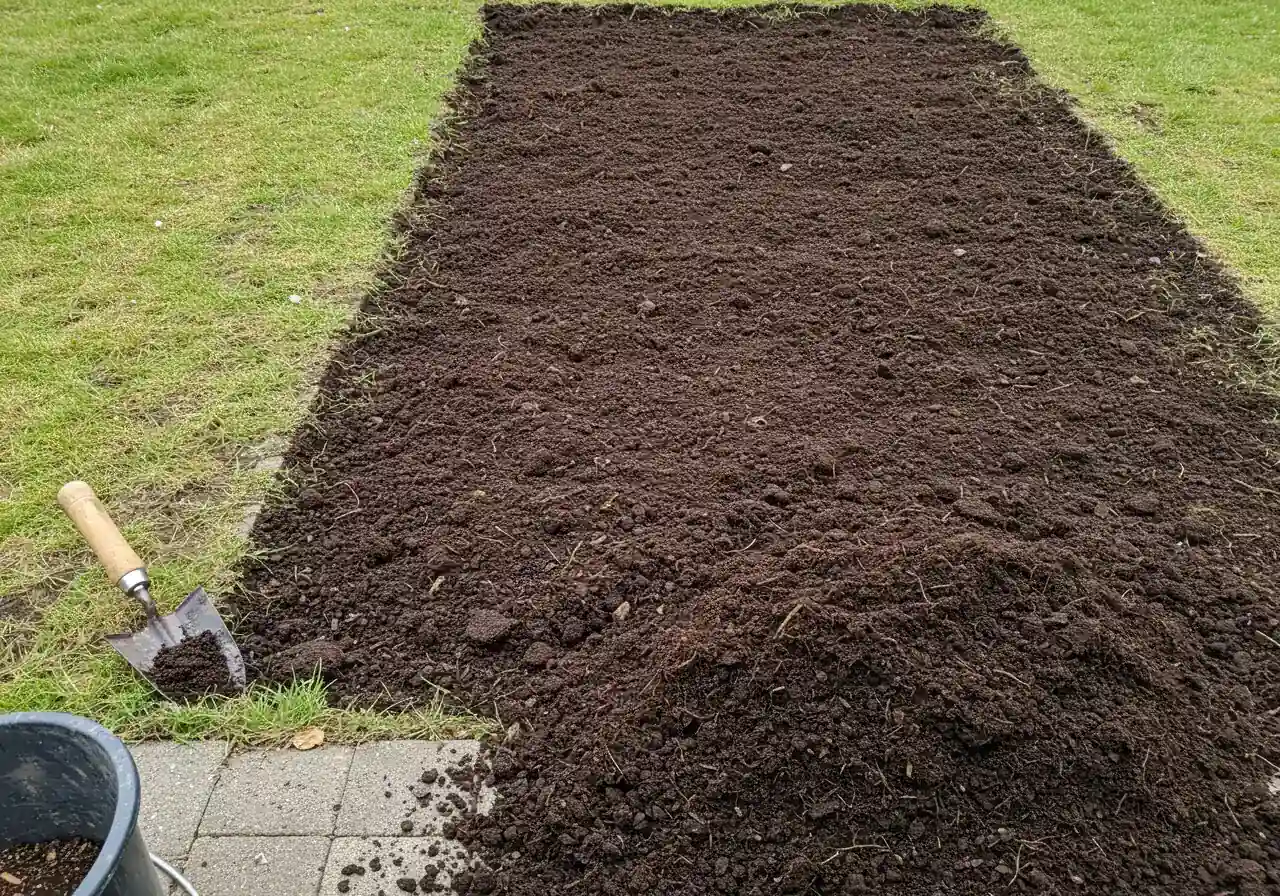
Okay, so you played detective and found the evidence – those crispy, brown patches screaming "salt damage!" It might look discouraging, especially along your pristine Metcalfe driveway or the walkway bordering your Osgoode garden, but don't hang up your gardening gloves just yet. It's time for *Operation Restoration*! Fixing salt damage takes a little effort, but with this step-by-step plan, you can nurse your lawn back to its green glory. Let's dive in!
Step 1: The Great Cleanup
First things first, we need to clear the affected area. Grab a sturdy rake and really get in there. Remove *all* the dead, brown grass, thatch, and any leftover winter gunk like sand or gravel that might have collected. You want to expose the soil underneath. Being thorough here is key – new grass seed needs good soil contact to germinate. If winter left behind a bigger mess than just salty edges, or the damaged area is quite large, considering help from a professional Metcalfe property cleanup service can get you started on the right foot without breaking your back.
Step 2: Flush (Carefully!)
Think of this as gently rinsing the salt deeper into the soil, away from the root zone where it causes the most trouble. The idea is to give the damaged areas a good, deep soaking. Apply about an inch or two of water slowly, allowing it to penetrate deeply. *Here’s the friendly warning:* Be mindful, especially with the common clay soils around Ottawa. You don't want to turn your lawn into a pond or cause salty water to run off onto other plants or hard surfaces. Water deeply, let it soak in well, and maybe repeat once or twice over a few days *only if* the area drains reasonably well. Avoid light, frequent sprinkling for this step.
Step 3: Soil Savior - Time for Amendments
Winter salt doesn't just dehydrate grass; it messes with the soil's health and structure. Let's lend a helping hand:
- Gypsum (Calcium Sulfate): This is often recommended for salt damage. Why? The calcium in gypsum essentially bumps the harmful sodium (from the salt) off the soil particles. This makes the sodium more mobile and easier to flush away with water. It's particularly helpful in clay soils. Sprinkle it over the affected area according to package directions. It won't fix everything on its own, but it can definitely help the recovery process.
- Compost - Your Lawn's Superfood: Seriously, don't skip this! Spreading a layer (around half an inch thick) of good quality compost over the damaged soil is incredibly beneficial. Compost adds vital organic matter, improves drainage *and* water retention, buffers the soil against salt, provides slow-release nutrients, and helps break up compacted soil. It’s a powerhouse amendment that supports overall soil health, which is crucial for success with things like professional garden maintenance too. Go for finished compost – it shouldn't smell bad! You can learn more about soil amending during a free estimate.
Step 4: Seeding for Success
With the cleanup and soil prep done, it's time to introduce new life! Overseeding the bare or thin patches is the way to go.
- Choose the Right Seed: Not all grass is created equal when facing salt. Look for grass seed blends specifically designed for resilience or those containing varieties known for better salt tolerance. For our Ottawa climate (Zone 5a), blends with *Tall Fescue*, *Perennial Ryegrass*, and certain *Fine Fescues* often perform better in stressful conditions, including salt exposure.
Grass Type Salt Tolerance Drought Tolerance Wear Tolerance Shade Tolerance Tall Fescue Medium-High High High Medium Perennial Ryegrass Medium Medium High Low Fine Fescues (Creeping Red, Chewings) Medium Medium-High Low-Medium High - Sow Your Seed: Gently rough up the surface of the soil where you applied the compost. Spread the grass seed evenly according to the instructions on the packaging (more isn't always better!). Lightly rake the seed in so it makes good contact with the soil – just barely covering it is perfect. A very light dusting of more compost or topsoil on top can help keep it moist.
- Keep it Moist: This is critical for germination! The newly seeded area needs to be kept consistently damp until the baby grass plants are established. This might mean light watering or misting a few times a day, especially if it's sunny or windy. Don't let the seed dry out, but avoid creating puddles.
Step 5: Patience and TLC (Tender Lawn Care!)
Your lawn rescue mission requires a bit of patience now. Grass takes time to grow strong. Keep up the gentle watering until the new grass is actively growing. Once it's about 3-4 inches tall, you can start mowing, but mow high! Keeping your lawn taller encourages deeper, more resilient roots. Regular ongoing lawn care practices, like proper fertilization (wait until the new grass is established – usually after 2-3 mows), will help it blend in and thrive. Finishing the look with neat garden borders using proper mulching and edging not only looks great but helps keep soil and amendments where they belong.
What if the Damage is Really Bad?
Sometimes, especially if the salt concentration was very high or the area is large, overseeding might be a slow battle. In these cases, cutting out the dead turf and opting for new sod installation offers a much faster, instant-green solution.
Follow these steps, give your lawn some time, and you’ll be well on your way to reversing that winter salt damage and enjoying a lush, green space again! Check our About Us page to learn more about our team.
Beyond the Grass: Saving Your Trees, Shrubs, and Flower Beds
Okay, so we've tackled the lawn, but what about the rest of the garden crew? Let's be honest, that winter salt doesn't discriminate – your precious hydrangeas, trusty cedars, and cheerful perennials along the walkway in Nepean or Manotick might be feeling pretty rough, too. Just like grass, they can suffer from dehydration, burnt leaves, and stunted growth thanks to that salty spray and runoff. Don't despair! There's plenty you can do to help them recover.
Step 1: Prune with Purpose (But Patience!)
It's tempting to immediately snip off every brown twig, but hold your horses (or pruning shears!). It's best to wait until your trees and shrubs start to leaf out or show buds. This way, you can clearly see which branches are truly dead and which ones were just playing possum.
- Trim the Crispies: Carefully prune away any dead or clearly damaged branches and twig tips showing that tell-tale brown, dry look. Make clean cuts just above a healthy bud or branch junction.
- Don't Go Overboard: Removing the dead stuff helps the plant direct energy to healthy growth. However, avoid heavy pruning initially, as the plant is already stressed. If you're faced with significant dieback, calling in help from a general Ottawa property cleanup service might be wise, as they often handle pruning debris removal.
Step 2: Give Them a Good Drink
Just like we flushed the lawn, your trees, shrubs, and flower beds need a deep watering to help wash the salt down past their roots.
- Soak, Don't Sprinkle: Apply water slowly and deeply around the base of the plants, extending out to the drip line (the edge of the branch spread). Aim for the water to penetrate at least 6-8 inches into the soil. Repeat this deep watering every few days for a week or two, *if* the soil drains well and isn't staying waterlogged. This consistent moisture helps dilute remaining salts and reduces drought stress. For consistent watering solutions, consider options like drip irrigation, especially in clay soils.
Step 3: Amend and Mulch Magic
Improving the soil is key to long-term recovery.
- Compost Power: Gently work some good quality compost into the top few inches of soil around your plants, being careful not to disturb roots too much. For flower beds, this is easier. Around trees and shrubs, focus on the area under the drip line. Compost improves soil structure, adds nutrients, and helps buffer against salt stress. Incorporating compost is often part of a thorough garden bed refresh, something a dedicated Marionville garden clean-up service can tackle effectively.
- Mulch is Your Friend: Apply a 2-3 inch layer of natural mulch (like shredded bark or wood chips) around your plants, keeping it a few inches *away* from the base of trunks and stems to prevent rot. Mulch conserves that precious moisture you just added, suppresses weeds, and slowly breaks down, adding more organic matter. Eco-friendly and effective! Our mulching services can help.
Step 4: Think Long-Term: Salt-Tolerant Choices
If you consistently battle salt damage in certain spots (hello, roadside plantings!), consider choosing tougher plants next time. Some species are naturally more resistant to salty conditions. Researching plants suited for Zone 5a (that's us here in the Ottawa region!) that also boast salt tolerance can save future headaches. Here are a few common, attractive options:
- Daylily (Hemerocallis varieties): Very adaptable and many varieties tolerate salt spray.
- Hostas (some varieties): Choose robust varieties; avoid those with thin leaves if salt spray is direct.
- Sedum 'Autumn Joy' (Hylotelephium 'Herbstfreude'): Tough, drought-tolerant, and handles salt well.
- Feather Reed Grass (Calamagrostis x acutiflora 'Karl Foerster'): Upright ornamental grass with good salt tolerance.
- Potentilla (Potentilla fruticosa): Hardy shrub, blooms profusely, and tolerates salt reasonably well.
- Rugosa Rose (Rosa rugosa): Extremely tough, salt-tolerant rose, often used in coastal areas.
- Juniper (Juniperus species - some): Many groundcover and upright junipers show good salt tolerance.
Choosing the right plants is part of smart material selection.
Step 5: Patience is Key
Plants recover at their own pace. Give them time, consistent care (water, appropriate feeding later in the season), and protect them from further stress. While some recovery tasks are DIY, larger scale cleanups might fall under services offered by a Marionville property cleanup service for those in that area. Remember, while we offer advice and services, results depend on many factors, as outlined in our service agreements; reviewing the terms and conditions is always a good idea. Unlike the instant gratification of some aspects of basic lawn care, nursing woody plants and perennials back from salt damage is often a marathon, not a sprint. But with a little TLC, you can help them bounce back beautifully!
Quick Wins for Salty Situations
Winter salt got your Greely garden feeling grumpy? Don't toss your trowel just yet! Here are a few quick fixes to help your lawn and plants bounce back:
- Rake & Rinse: First, clear away all that dead, brown grass and debris. Then, give the affected soil a good, deep soak (without creating a swamp!) to help flush salts downwards, away from thirsty roots.
- Soil TLC: Lend your soil a hand! Gently mixing in compost adds organic matter and improves structure. Gypsum can also help displace sodium in clay soils. This is great prep work if you're thinking about a future garden install too!
- Water Wisely: For established plants showing stress, focus on deep, infrequent watering rather than light sprinkles. This encourages deeper roots and helps wash salts further down. RVCA has tips on water-wise gardening.
- Know When to Call: Feeling overwhelmed by the cleanup? Sometimes a professional touch makes all the difference. Consider an Ottawa garden clean-up service for focused garden help, or a general property clean-up for bigger jobs. If you're near Marionville, check out our specific Marionville property cleanup service. Your efforts make Ottawa greener – Thank You! You can also check our customer portal for updates if you are an existing client: Customer Portal.
Get Ahead of the Game: Preventing Salt Damage Next Winter
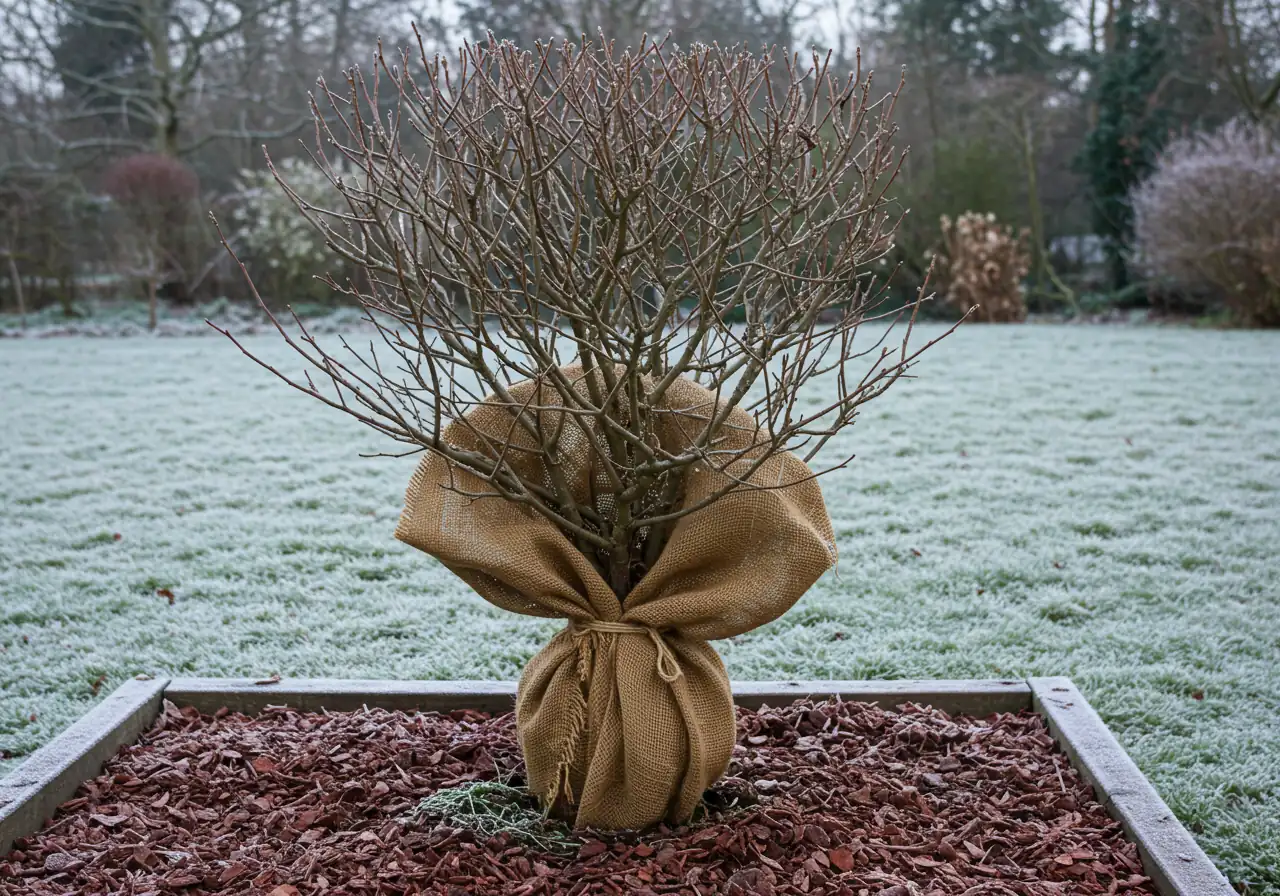
Alright, we've talked about patching things up after winter's salty tantrum, but wouldn't it be great to avoid the worst of it next year? Like Mom always said, an ounce of prevention is worth a pound of cure (or maybe a whole bag of grass seed!). Getting ahead of salt damage *before* the snow flies is the smartest, and often easiest, long-term strategy for keeping your Ottawa landscape looking its best. Let's talk proactive planning!
Be a Savvy Salter (or De-icer User):
Less is definitely more when it comes to de-icers. Remember, the goal is safety, not turning your walkway into a salt flat!
- Shovel First, Salt Second: Clear away as much snow and ice as you can *before* reaching for the bag. De-icer works best on thin layers.
- Apply Sparingly & Strategically: Follow the package instructions! You often need much less than you think. Apply it *before* ice fully bonds to the pavement, if possible. Focus on high-traffic spots.
- Consider Alternatives: Plain old sand offers grit for traction without the chemical burn. Eco-friendlier de-icers like calcium magnesium acetate (CMA) or beet juice blends exist, though they can be pricier. Standard rock salt (sodium chloride) is usually the harshest on plants. The City of Ottawa's winter maintenance page sometimes offers tips.
Create Physical Barriers:
Think of this as giving your vulnerable plants a winter coat!
- Burlap Bonanza: For shrubs and small trees near roads or walkways (you often see this driving through communities like Winchester or Vernon), wrapping them loosely in burlap can shield them from salt spray. Install stakes around the plant and wrap the burlap around the stakes, leaving some air circulation. Remove it promptly in spring.
- Raise 'Em Up: Designing garden beds to be slightly raised, especially those bordering sidewalks, can help keep salty runoff from pooling directly on plant roots. Good soil preparation within these beds is still key for drainage and plant health.
Late Fall: Prep & Protect
Rake leaves thoroughly. Install burlap barriers around vulnerable shrubs near roads/walkways.
Before First Snow: Stock Up
Ensure you have de-icer (use sparingly!) and consider alternatives like sand for traction.
During Winter: Smart De-Icing
Always shovel first! Apply de-icer strategically only where needed. Avoid piling salty snow onto garden beds or lawns.
Early Spring: Unveil & Assess
Remove burlap barriers promptly as weather warms. Begin assessing for any salt damage.
Smart Landscape Design:
Sometimes, working *with* the problem area is the best bet.
- Choose Tough Plants: If a spot consistently gets blasted with salt, consider planting salt-tolerant species there (see list above!). Many beautiful shrubs, grasses, and perennials can handle tougher conditions. Our gallery shows examples of resilient plantings.
- Buffer Zones: Create a barrier between your lawn/garden and the salted surface. A strip of gravel or mulch along the driveway edge can catch some runoff.
- Improve Drainage: Ensure water (including meltwater carrying salt) flows *away* from sensitive planting areas.
Fall Prep is Key:
A clean slate before winter helps! Raking up leaves and debris ensures salt doesn't get trapped and concentrated in decaying matter over winter. This makes spring revival easier and is a core part of any good fall property clean-up. For those in the south end, specific services like a Metcalfe yard cleanup service can handle this essential autumn task.
Taking these steps in the fall and being mindful during winter can significantly reduce the damage you face come spring. Planning some preventative landscaping adjustments or need a hand with that crucial fall prep? You can always book an estimate with Clean Yards to discuss your options. Let's keep next winter's salty surprises to a minimum! Our Privacy Policy details how we handle your information.
Relative Salt Tolerance of Common Landscape Elements
*Note: Values are illustrative percentages representing relative tolerance.
Your Ottawa Salt Damage FAQs Answered
Great question! Salt damage usually shows up as brown, dead-looking grass right next to driveways, sidewalks, or roads – think crispy strips where snow (and salt) piled up or splashed. Snow mold often looks like circular, matted patches (grey or pinkish) that can appear anywhere. Grub damage usually makes the turf feel spongy and easy to pull back like a carpet, often appearing a bit later. If the damage hugs the pavement in areas like Richmond or Nepean, salt is the likely culprit.
Sometimes, with mild damage and plenty of spring rain to help flush the soil, plants can recover. However, moderate to severe salt damage often needs a helping hand! The salt dehydrates plants and compacts the soil, making recovery tough without intervention like flushing, adding compost, and reseeding or replacing plants. For widespread issues, a professional Ottawa yard cleanup service can assess the damage and tackle the restoration needed to bring your landscape back to life. You can give estimate feedback if you've used our services.
The sooner, the better, once the snow is gone and the ground isn't frozen solid! Early to mid-spring is ideal. This gives you time to flush the soil, add amendments like compost, and get new grass seed or plants established before the summer heat stress kicks in. Waiting too long makes recovery harder. Acting promptly gives your lawn and garden the best chance to look great all season long.
Absolutely! Choosing the right plant for the right place is key in landscaping. Some plants are naturally more tolerant of salty conditions than others. Consider species like Daylilies, Sedum 'Autumn Joy', Hostas (some varieties), ornamental grasses like Feather Reed Grass, or shrubs like Potentilla or some varieties of Spirea. Doing a bit of research on material selection for salt-tolerant perennials and shrubs suited for our Zone 5a climate can save you headaches down the road, especially for those exposed spots in Kars or along busy roads.
Adding organic matter, especially good quality compost, is incredibly beneficial! Compost helps improve soil structure damaged by salt, increases water retention (counteracting the drying effect), provides nutrients, and buffers the soil pH. Gently working compost into the top layer of soil in affected lawn areas and garden beds gives roots a much healthier environment to recover in. For focused garden help, especially in hard-hit beds, services like a Metcalf garden clean-up service often incorporate soil amending. You can see amazing recovery transformations when soil health is prioritized!
That's a common question! The City of Ottawa primarily regulates salt use on municipal roads and sidewalks. While guidelines often encourage environmentally responsible de-icing practices on private property, specific restrictions or bylaws regarding *homeowner* salt application can vary or change. It's always best to check the current City of Ottawa website or contact 3-1-1 directly for the most up-to-date information regarding any potential bylaws affecting residential properties. Using less is always better for your landscape and local waterways like the Rideau River (RVCA website)!
Conclusion: Greener Gardens Ahead for Russell!
Whew! Winter salt damage can feel like your garden's grumpy hangover after a long, cold party. But chin up, Russell homeowners! As we've explored, those brown, crispy edges don't have to spell doom for your beautiful outdoor space. Greener gardens *are* totally achievable with a bit of focused effort. Just remember the basic game plan for effective *salt damage repair*:
- Clear away the dead stuff and debris.
- Gently *flushing* the affected soil with water.
- Improving *soil health* with amendments like *compost* or gypsum.
- *Overseeding* damaged lawn areas or replacing sensitive plants with hardier options.
It’s all about giving your landscape the TLC it needs to bounce back from winter's salty shenanigans!
Tackling this *gardening* and *lawn care* restoration yourself can be rewarding, but let's be honest, sometimes the damage feels overwhelming, or life just gets too busy. If you're looking at stressed turf or struggling shrubs in Russell, Embrun, Metcalfe, Greely, or the surrounding communities and thinking "Help!", the friendly team at Clean Yards is ready to step in. We offer targeted cleanup and repair services to counteract salt damage and restore your yard's vitality. Let us handle the salty aftermath so you can simply enjoy a vibrant, healthy landscape this spring and summer. Ready for that fresh, green start? Reach out to Clean Yards today to discuss your project and get a personalized quote!

